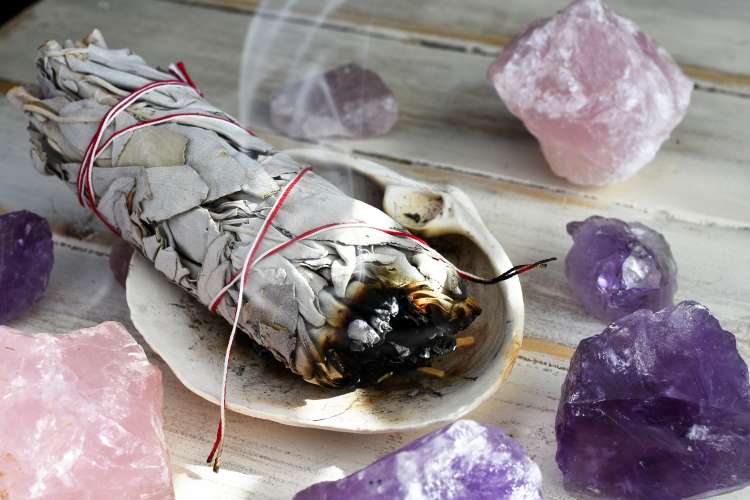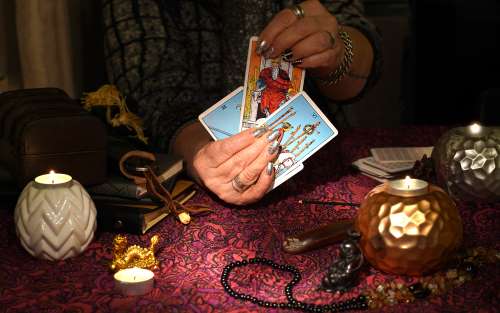Kyanite Gemstone: Colors, Properties, and Meaning of the Rare Mineral
- September 09, 2024
- 1781
- 1
Kyanite, named by Abraham Gottlieb Werner in 1789, is one of those stones that’s just as fascinating for its history as it is for its beauty. The name comes from the Greek word cyanos, meaning “blue,” which totally makes sense given that Kyanite is best known for its stunning blue hues. Shades ranging from soft, dreamy baby blues to deep, rich sapphire tones. Some pieces even show off pleochroism, which means you can catch different colors depending on the angle you look at it from. It’s like Kyanite has a secret palette of colors it only reveals to those who take the time to admire it.
Now, while blue is what Kyanite is most famous for, it’s not the only color it comes in. Far from it, actually! Kyanite also shows up in greens, blacks, browns, and even a rare orange variety that’s a real head-turner. The green and teal versions are particularly impressive, with specimens from places like Australia growing up to 30 cm in size. And then there’s “Emerald Kyanite,” a deep, bottle-green variety from Nepal and Tibet that’s so striking, it rivals some of the finest Zambian emeralds. This stuff is rare, though, and when you come across it, you know you’re looking at a treasure.
That rare orange Kyanite? It comes from Tanzania and owes its color to trace amounts of manganese. The black variety, often called “Witches Broom” because of its fanned shape, is most commonly found in Brazil, especially in the Minas Gerais region. There’s also a deep blue Kyanite from Tibet that looks eerily similar to the coveted Kashmire Sapphires. So, whether you're into soft blues, rare oranges, or rich greens, Kyanite’s got a whole color spectrum waiting for you.
What Is Kyanite?
At its core, Kyanite is an aluminosilicate mineral with a triclinic crystal system. It’s polymorphous with minerals like sillimanite and andalusite, meaning they share the same chemical composition but have different structures. Kyanite forms in high-pressure, low-temperature environments, often in metamorphic rocks like schist. You’ll usually find it in sprays of bladed crystals, though the really prized pieces are those rare individual euhedral crystals that collectors go wild for.
Interestingly, pure Kyanite is actually colorless. It’s the impurities, like iron, that give it those striking blues. Other elements like chromium, titanium, and manganese are what create the greens, browns, blacks, and oranges. It’s one of those stones where a little bit of impurity actually makes it all the more beautiful!
History and Folklore
Kyanite has been admired for centuries, with stories tying it to everything from ancient sailors to royalty. Legend has it that travelers and sailors used Kyanite as a makeshift compass, believing it could help them find their way if hung from a string. There’s something kind of romantic about that idea—relying on a piece of the earth to guide you through the unknown.
In ancient Slavic folklore, it was believed that holding a flawless piece of Kyanite in your hands could bring clarity and peace of mind. On the flip side, cracked or chipped Kyanite was thought to bring misfortune. So if you’re ever on the hunt for Kyanite, be sure to choose a piece that’s free of imperfections, just in case.
There’s also a story about German mineralogists in the 1800s who thought Kyanite resembled wood because of its unique internal texture. And apparently, some less-than-honest traders would soak Kyanite in honey and bake it to enhance its color, trying to pass it off as a higher-quality stone. Sneaky, right?
Metaphysical Properties
For those who are into the metaphysical, Kyanite is often seen as a stone of alignment and balance. It’s said to have a calming energy that can help center your mind and open up communication. Some believe it helps you connect with higher realms, making it a favorite among those who practice meditation or spiritual work. And because Kyanite doesn’t hold onto negative energy, it’s a great stone to have around when you need a little energetic reset.
It’s also known for its ability to help with lucid dreaming and accessing deeper states of awareness. Whether or not you’re into the spiritual side of things, it’s hard to deny that there’s something inherently calming about holding a piece of Kyanite.
Where It Comes From
Kyanite is found in quite a few places around the world, with some of the best material coming from countries like Nepal, Tibet, Brazil, and Tanzania. The finest blue Kyanite, especially the kind that’s perfect for faceting into gemstones, often hails from Nepal and Tibet. These regions are known for producing Kyanite that rivals even the most beautiful sapphires.
Other locations like Switzerland, Russia, Kenya, Cambodia, and Myanmar also produce Kyanite, though the quality can vary. In the U.S., Kyanite deposits have been found in several states, though they’re usually not as gemmy as the material from other parts of the world.
Kyanite Jewelry
When it comes to jewelry, Kyanite can be a bit tricky to work with. Its perfect cleavage makes it challenging for lapidarists to facet, so you’ll often find Kyanite cut into cabochons or beaded into necklaces. But as faceting techniques improve, more jewelers are taking the plunge and trying out different cuts. Still, Kyanite remains a delicate gemstone, so if you do invest in a faceted piece, handle it with care. Beaded and cabochon pieces are generally more durable options for everyday wear.
Larger Kyanite gemstones—anything over 2 carats—are rare, and the price reflects that. The value of Kyanite is usually determined by its clarity, color, and size, with the most vibrant and flawless stones fetching the highest prices.
Kyanite Uses Beyond Jewelry
While high-quality Kyanite makes for stunning jewelry, the lower-grade stuff has some pretty important industrial uses. It’s used in the production of ceramics and abrasives, and its heat-resistant properties make it a go-to for things like refractory bricks, electrical insulators, and even firefighters' uniforms. Kyanite is also used in the automotive and railroad industries for things like clutch facings and brake shoes.
Another interesting use for Kyanite is in porcelain, especially in things like sinks, basins, and bathroom fittings. Its predictable expansion when exposed to heat makes it a valuable material in products where maintaining volume is crucial.
In the end, whether you’re drawn to Kyanite for its history, beauty, or metaphysical properties, there’s no denying that it’s a gemstone with layers of intrigue. So, the next time you see a piece of Kyanite, take a moment to appreciate the journey it’s been on—from deep within the earth to your hands.
Related Posts
Rose Quartz: The Pink Stone of Love
- 3013
- 0
Exploring the metaphysical properties of Rose Quartz to promote love and tenderness.
Labradorite - The Flashy Stone of Magic
- 2243
- 0
The way labradorite flashes and gleams with those signature labradorescent colors, it’s like holding a slice of the Northern Lights in your hand.
















